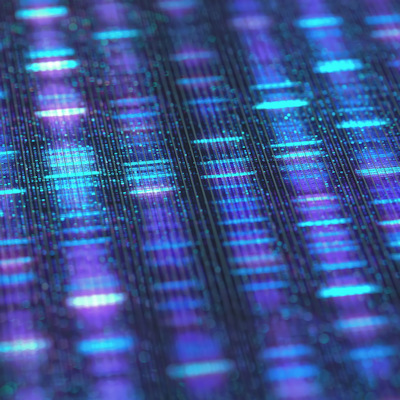November 2, 2020 -- The SARS-CoV-2 virus has accumulated genetic mutations that may make it more contagious and more easily spread in metropolitan communities, according to researchers who analyzed over 5,000 COVID-19 patient samples in the Houston area. They published their results in mBio on October 30.
At the onset of the pandemic in the U.S., metropolitan areas such as Seattle and New York City were centers of outbreaks of COVID-19, the disease caused by SARS-CoV-2. Cases numbered from tens to hundreds of thousands of confirmed cases.
Houston is the fourth largest and most ethnically diverse city in the U.S. with a population of approximately 7 million in the greater Houston area. The first COVID-19 case in the metropolitan Houston area was reported on March 5, and many early cases were associated with national or international travels to areas known to have SARS-CoV-2 outbreaks. The first wave of COVID-19 cases in Houston peaked around April 11-15 and declined until May 11. The second wave of COVID-19 cases was defined as the period between May 12 and July 7.
A central diagnostic laboratory serving the Houston Methodist Hospital health system, including seven hospitals in the area, allowed researchers to rapidly identify SARS-CoV-2-positive patients and analyze genomic variation among genetic strains of the virus.
Various SARS-CoV-2 strains with diverse genotypes have been identified throughout the first and second waves. For example, the amino acid residue, Asp614, located in subdomain 2 of the spike protein, forms a hydrogen bond and electrostatic interaction with two residues in the S2 subunit of the spike protein. Replacement of the aspartate (Asp) with glycine (Gly) has been demonstrated to eliminate both of these interactions. This would weaken the contact between the S1 and S2 subunits and potentially increase infectivity of the virus, leading to enhanced spread.
To investigate the genomic makeup of SARS-CoV-2 between the two waves, researchers from the University of Texas at Austin in conjunction with scientists at Houston Methodist Hospital sequenced the genomes of 5,085 SARS-CoV-2 strains. They found that there were four primary lineages, or clades, of the virus including G, GH, GR, and S. The Gly614 amino acid mutation in the spike protein was present in 82% of SARS-CoV-2 strains in the first wave and in 99.9% of samples from the second wave.
The presence of the Gly614 variant in the spike protein in the first wave was correlated with mechanical ventilation and length of hospital stay in patients who were infected with that strain, and with length of stay in the intensive care unit, but did not correlate with patient outcomes.
To further evaluate if the Gly614 variant was associated with higher viral loads, as previously reported, the team evaluated the cycle threshold for every sequenced strain. They found that strains with the Gly614 variant have significantly lower cycle threshold values, indicating that these patients had, on average, higher virus loads at initial diagnosis than patients with Asp614 variants of the virus.
Cell culture experiments testing single amino acid changes in the spike variants that contained the Gly614 variant found that they had higher infectivity for host cells in vitro than spike-Asp614. This may be due to increased stability and incorporation of the spike protein into the pseudovirus.
Amino acid substitutions in the receptor-binding domain in Gly614 variants did not impact the structure of the virus; however, they did have reduced expression and decreased thermostability relative to variants that had only a single D614G amino acid replacement.
Importantly, some other mutations in the receptor-binding domain, while not changing the structure of the virus, may lead to functional changes. For instance, three receptor-binding domain variants (F338L, S373P, and R408T) had substantially reduced affinity for CR3022, an anti-SARS-CoV-2 monoclonal antibody.
To evaluate community spreading of the virus the researchers evaluated spatial and temporal mapping of genomic data. They found that widespread community dissemination occurred soon after initial cases were reported in Houston. The data shows that multiple strains of the virus independently entered the area (from clades originating from Europe, Asia, South America, and elsewhere in the U.S.) early in the first wave. The rapid spread of individual strains confirms other findings that the virus can rapidly spread from person to person.
"The virus continues to mutate as it rips through the world," said author Ilya Finkelstein, PhD, associate professor of molecular biosciences at the University of Texas at Austin, in a statement. "Real-time surveillance efforts like our study will ensure that global vaccines and therapeutics are always one step ahead."
Since each new infection is a chance for the SARS-CoV-2 virus to develop more dangerous mutations, the researchers are continuing to survey the third wave of COVID-19 patients in Houston to characterize how the virus is adapting to neutralizing antibodies produced by the immune system.
Do you have a unique perspective on your research related to virology or infectious diseases? Contact the editor today to learn more.
Copyright © 2020 scienceboard.net










